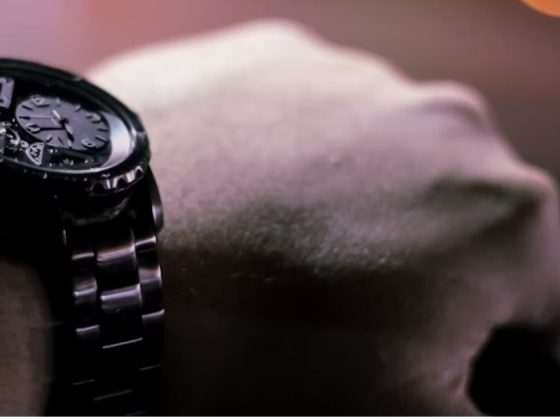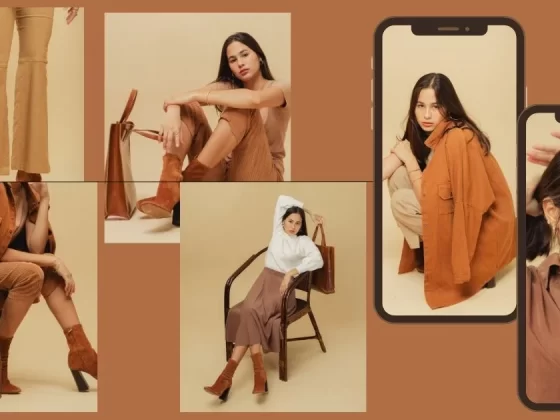Choosing a wedding ring is one of the most significant decisions you’ll make in your wedding journey. After all, it’s not just a piece of jewelry—it’s a symbol of love, commitment, and a lifetime together. Unlike other accessories, this is one item you’ll likely wear daily, so picking the perfect ring requires careful thought and consideration. The abundance of options can feel overwhelming. But don’t worry! This guide will break down everything you need to know about choosing a wedding ring that fits your style, comfort, and budget.
The Meaning Behind the Wedding Ring
Before diving into styles, metals, and budgets, let’s take a moment to understand the deep significance behind wedding rings. The tradition of exchanging rings dates back thousands of years to ancient Egypt, where circles symbolized eternity. The idea was later adopted by the Romans, who used rings to signify commitment and ownership. Today, wedding rings represent a promise of everlasting love and devotion.
The circular shape of a wedding band has no beginning or end, symbolizing infinite love. Whether plain or adorned with diamonds, every wedding ring carries a personal and historical significance that makes it special.
Which Finger Should You Wear It On?
The wedding ring is traditionally worn on the left ring finger, believed to be connected to the heart through the “vena amoris,” although customs vary by culture. For example:
- In many European countries (such as Germany and Russia), wedding rings are worn on the right hand.
- In some Indian cultures, rings are traditionally worn on the right hand because the left hand is considered inauspicious.
Ultimately, the choice is yours! Choose what feels right for you, whether you adhere to tradition or a personal approach.
Matching vs. Non-Matching Wedding Rings
One of the couple’s first decisions is whether to choose matching or non-matching wedding bands. Here’s a look at both options:
Matching Wedding Bands
Matching wedding bands is a beautiful way to symbolize unity in a marriage. These sets are designed to complement each other, often crafted from the same metal, featuring similar engravings, or sharing a cohesive design. Many couples choose matching bands to express their deep connection and commitment through a coordinated aesthetic. This option simplifies the shopping process since both partners can agree on a unified look, making the decision less overwhelming. If you and your partner appreciate symmetry and tradition, matching wedding bands may be the perfect choice for you.
One major advantage of matching wedding bands is that they create a seamless and elegant look. Since they are often sold as a set, couples may also save money compared to purchasing individual rings separately. Additionally, a coordinated set ensures that both rings maintain the same quality, style, and durability. However, a downside is that matching bands can limit personal expression, as both partners must compromise on a single design. Finding a matching set that satisfies both can be challenging if one partner prefers a bold, diamond-studded ring while the other prefers a minimalist band.
Non-Matching Wedding Bands
Non-matching wedding bands allow each partner to express their unique style without limitations. With this approach, couples can select rings that reflect their individual personalities, preferences, and lifestyles. This is a great option for those with different tastes in jewelry, as one person may prefer a sleek platinum band while the other chooses a vintage-inspired gold ring. Personalization is another major benefit, allowing couples to engrave meaningful messages, incorporate unique gemstones, or choose different finishes. Non-matching wedding bands embrace individuality while still symbolizing love and commitment in a way that feels personal.
One of the biggest benefits of non-matching wedding bands is the variety of choices available. Couples can explore different metals, styles, and settings, ensuring each person gets a ring they genuinely love. Another advantage is that each partner can select a ring that fits their lifestyle, whether a durable titanium band for an active person or a delicate diamond ring for someone who enjoys elegance. However, non-matching rings might not be the best choice for couples who prefer a cohesive or traditional look. While they allow for personal freedom, they may not provide the same level of unity as a matching set.
Key Considerations for Choosing a Wedding Ring
There are several important factors to consider when selecting your wedding ring:
1. Style: What’s Your Aesthetic?
Your wedding ring should reflect your style and taste, as you’ll wear it daily. Some people prefer classic plain bands, which offer a timeless, minimalistic look that never goes out of fashion. Others gravitate toward diamond bands, adding a touch of sparkle and elegance to their ring. If you love intricate details, a vintage-inspired ring with delicate engravings and filigree might be the right choice.
Those who prefer a bold and unique statement may opt for eternity rings, which feature a continuous circle of diamonds or gemstones. For a truly one-of-a-kind piece, some couples choose custom rings, incorporating personal engravings, mixed metals, or meaningful gemstones. Whether you lean toward modern simplicity or ornate vintage designs, selecting a style that resonates with you is key to ensuring you’ll love your ring for a lifetime.
2. Comfort: You’ll Wear It Every Day
Since your wedding ring will be worn daily, comfort should be a top priority when selecting. One important factor is ring width, as wider bands may feel bulky on smaller fingers, while thinner bands offer a lighter feel. The weight of the metal also plays a role, with heavier metals like platinum feeling more substantial, while lighter options like titanium may be more comfortable for extended wear.
Another key element is the inner band finish, where a “comfort fit” design with rounded edges can significantly affect how the ring feels. Rings with sharp edges or overly intricate designs may irritate, especially if you use your hands frequently. It’s also worth considering how the ring will sit against your engagement ring if you plan to wear it together. Testing different styles in person will help you determine the best fit for your comfort and lifestyle.
3. Lifestyle: Will Your Ring Withstand Daily Wear?
Your lifestyle determines the best material for your wedding ring, ensuring it remains beautiful and durable. If you have a hands-on job or lead an active lifestyle, platinum is an excellent choice because it is highly durable and resistant to scratches. For those who want a balance of affordability and durability, 14k or 18k gold is a popular option, though it is softer than platinum and may require more maintenance.
If you prioritize toughness above all else, titanium or tungsten are highly durable and scratch-resistant, making it ideal for people who work with their hands. However, remember that titanium and tungsten cannot be resized, which may be an issue if your ring size changes over time. Choosing a metal that resists tarnishing is crucial for individuals who frequently handle water or chemicals. The right choice depends on your daily activities, so consider how much wear and tear your ring will endure.
4. Budget: Set a Realistic Price Range
Before purchasing a wedding ring, it’s essential to establish a budget that aligns with your financial situation and expectations. Wedding rings come in a wide price range, influenced by metal type, design complexity, and gemstone selection. A plain gold band typically costs between $300 and $1,000, making it an affordable yet elegant choice. If you’re interested in diamond or eternity bands, expect to pay between $1,000 and $5,000, depending on the size and quality of the stones.
For those seeking a custom or designer ring, prices can range from $2,000 to $10,000 or more, especially if unique materials or intricate details are included. Setting a budget in advance helps narrow your options and ensures you don’t overspend. No matter your price range, prioritize quality over trends, as this is a piece meant to last a lifetime.
5. Craftsmanship: Find a Trustworthy Jeweler
When selecting a wedding ring, choosing a jeweler known for quality craftsmanship and ethical sourcing is crucial. A reputable jeweler will provide certifications for diamonds or precious metals, ensuring your ring is made from authentic, high-quality materials. Review customer reviews and ask for recommendations to find a trustworthy store with a strong reputation. Inquire about warranties, resizing policies, and return options, as these can be essential in case of future adjustments or repairs.
If purchasing a diamond ring, ask about the 4Cs—cut, color, clarity, and carat weight—to ensure you get the best value for your budget. Some jewelers also offer customization options, allowing you to create a unique and meaningful ring. Investing in a well-crafted ring from a reputable jeweler ensures that your symbol of love will last for generations to come.
Popular Wedding Ring Styles and Metals
Classic Metals:
- Yellow Gold – Traditional and timeless
- White Gold – Modern with a platinum-like look
- Rose Gold – Romantic and vintage-inspired
- Platinum – Durable and hypoallergenic
Alternative Options:
- Titanium – Lightweight and scratch-resistant
- Tungsten – Extremely durable but not resizable
- Sterling Silver – Affordable but requires more maintenance
How to Care for Your Wedding Ring
Your wedding ring is an investment, and proper care will keep it looking beautiful for years. Here’s how to maintain it:
- Regular Cleaning: Soak the ring in warm, soapy water and gently brush it with a soft toothbrush.
- Professional Inspections: Take it to a jeweler annually to check for loose stones or damage.
- Avoid Harsh Chemicals: Remove your ring before using cleaning products, swimming, or applying lotions.
- Storage: When not wearing your ring, keep it in a soft pouch or jewelry box to prevent scratches.
- Insurance: Ensure your ring protects against loss, theft, or accidental damage.
Make the Right Choice for You
Choosing the perfect wedding ring is a personal journey. Whether you opt for a simple band or an ornate diamond-studded ring, the most important thing is that it reflects your love and commitment. Take your time, explore different options, and most importantly—choose a ring that makes you happy.








